According to the State of Michigan, the total number of COVID cases in Michigan rose to 43,754, an increase of 547 cases from the previous day. This total was equivalent to 438 cases per 100,000 people (Chart 4) on May 3. The five-day rolling average for the total number of COVID cases (Chart 1) reflects a smoother curve and adjusts for fluctuations in testing and/or the quality of reporting or failure to report. That curve continues to move steadily upward, with the rate of increase veering up over the weekend. Note that this five day rolling average causes these daily case and the daily death charts to lag two days behind.
Chart 2 reflects the five-day rolling averages at the County level and for the City of Detroit. The number of COVID cases in Detroit continue to increase and remain the highest in the region; the City reported 9,168 as of May 1. Wayne County continues to pull away from the other counties in the region, having the second highest cumulative number of cases at 7,751. On May 1 the five-day rolling average for the number of COVID cases in Oakland County was 7,368, and for Macomb County the reported number was 5,598.
Chart 3 shows that Detroit again had the highest number of new daily cases on May 1 but the overall rate of change was slightly downward. Wayne and Oakland counties experienced a decrease in the number of new confirmed COVID cases while Macomb County experienced an increase.
The daily data highlighted in these posts is from Michigan.gov/coronavirus, where data is updated daily at 3 p.m. Historical data were supplied from covidtracking.com, which republishes COVID data from the State.
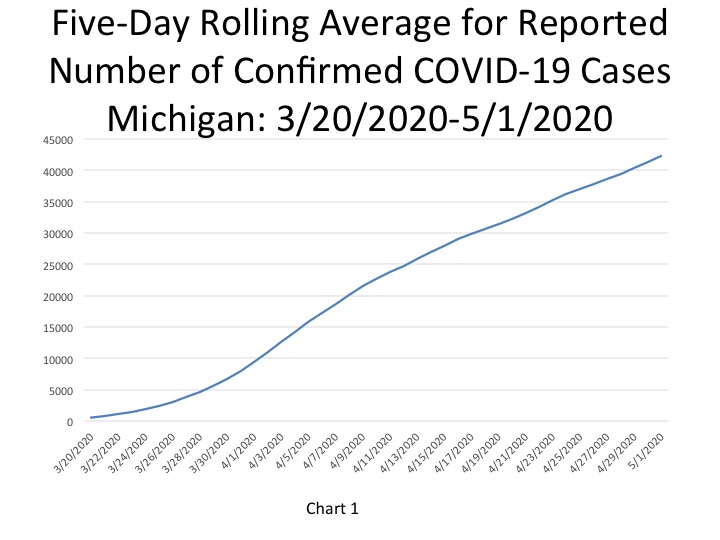
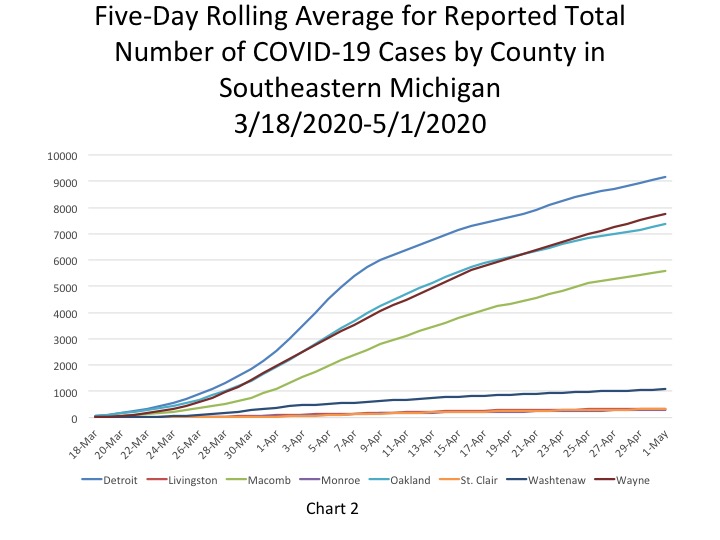
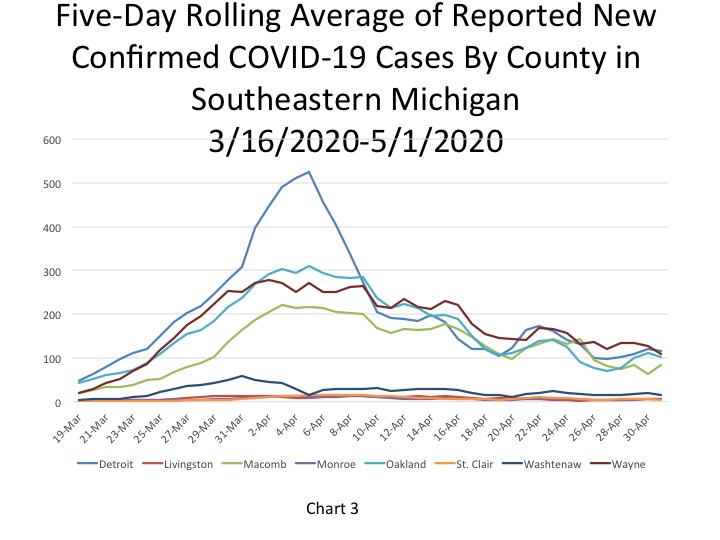
The City of Detroit had 1,395 COVID cases per 100,000 people on May 1, an increase from 1,380 the day before (Chart 4). This is based upon a reported increase of 106 new cases, bringing the total number of COVID cases in Detroit to 9,386. Wayne County reported 1,176 cases per 100,000 people, and Oakland County had 1,118 cases per 100,000 people. These May 3 per capita rates were based upon 7,912 total cases for Wayne and 7,518 for Oakland. Macomb County reported 856 cases per 100,000 people, which is based upon 5,756 cases.
Chart 5 shows that Detroit continues to have the highest number of new daily COVID cases per 100,000 people, but experienced a decline on May 3 while Macomb and Wayne counties experienced an increase. Detroit had 16 new COVID cases per 100,000 people, which was equivalent to 106 new cases. Wayne County had 8 new cases per 100,000 people on May 3, which was equivalent to 86 new cases, and Macomb County had 10 new cases per 100,000 people, which was equivalent to 90 new cases. Oakland County also experienced a decline in the per capita rate for new daily COVID cases. On May 3, Oakland had 3 new COVID cases per 100,000 people, equating to 43 new cases.
The State’s per capita rate was 5.4 new cases per 100,000 people, equivalent to 547 new cases.
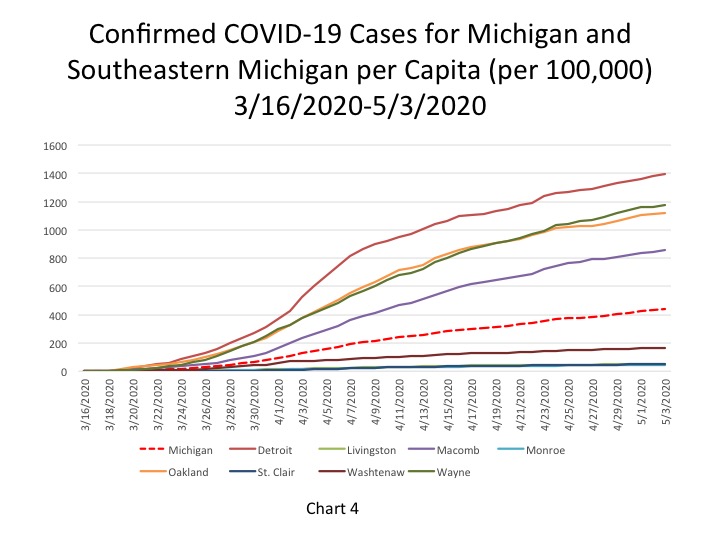
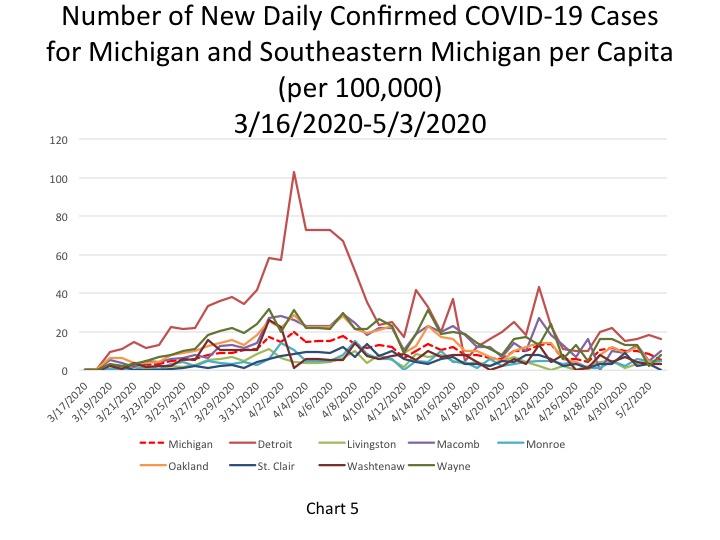
In Chart 6 the five-day rolling average for the number of deaths shows a continuing steady increase (a lagged number of 3,879 deaths, an increase of 60 deaths). The actual reported COVID-19 deaths reached 4,049 on May 3, an increase of 29 deaths from the day prior. Chart 7, a five-day rolling average chart, shows the number of daily additional deaths has been declining overall since April 23. The trends in Chart 9 further show a clear pattern of decline in the number of additional daily deaths across Detroit and the counties of Southeastern Michigan.
Chart 8, a five-day rolling average for the number of cumulative COVID deaths by each county, shows how the number of deaths in Detroit continue to rise at a more rapid rate than any of the other government entities in the region. However, the City’s rate of increase has declined in the last few days, and may continue to do so as the number of new deaths in the City also continue to decline. Despite this, Detroit also continues to have the highest number of COVID deaths. Second to Detroit, Wayne County has the highest number of total reported COVID deaths, and those numbers are increasing at a rate faster than Macomb and Oakland counties. Of the three largest counties and Detroit, Macomb County’s total number of COVID deaths is increasing at the slowest rate.
Chart 9 shows a steep decline in the number of daily deaths in Detroit, a decline that has been occurring since April 23. This continued decline put Wayne and Oakland counties ahead of Detroit for the number of daily COVID deaths. The most recent drop in the number of additional daily deaths for Detroit may reflect a a lag in reporting, however. On May 3 Detroit didn’t report any new deaths, which has not happened since the first reported COVID death in March.
Chart 10 represents the total number of COVID deaths per 100,000 people. For Detroit on May 3 there were 161 COVID deaths per 100,000 people (representing 1,085 deaths). In Wayne County there were 120 COVID deaths per 100,000 people (808 total deaths), in Oakland County there were 113 deaths per 100,000 people (757 total deaths), and in Macomb County there were 93 COVID deaths per 1000,000 people on May 3 (628 total). The State of Michigan had 41 COVID deaths per 100,000 people, a rate that continues to remain lower than the four entities discussed above. On May 3 Oakland County reported the highest number of additional deaths at 12; the State of Michigan had 29 deaths reported total.

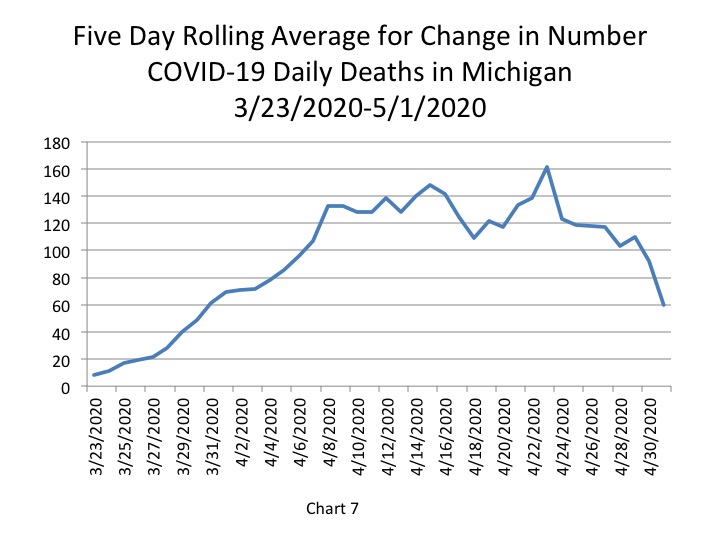
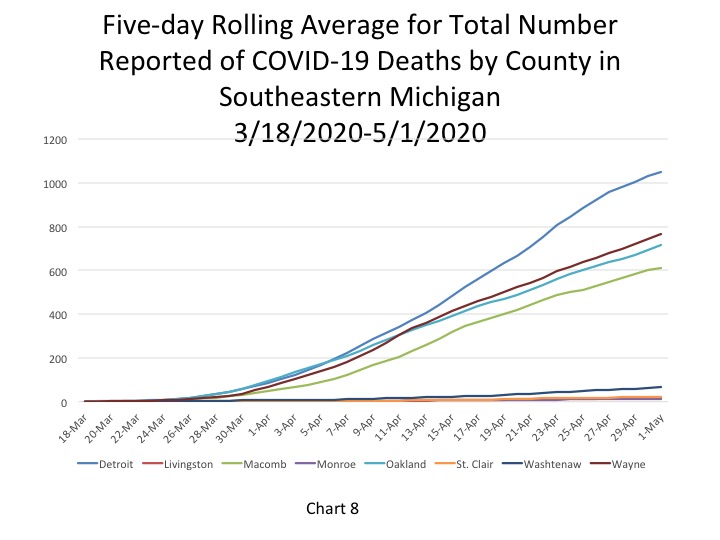
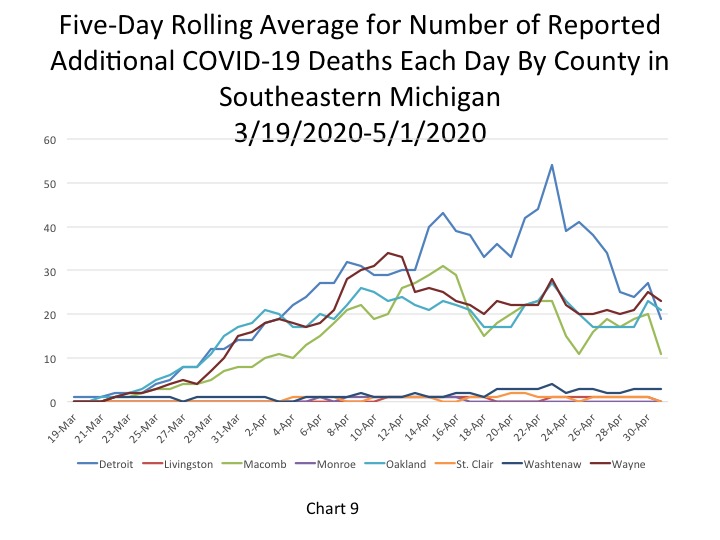
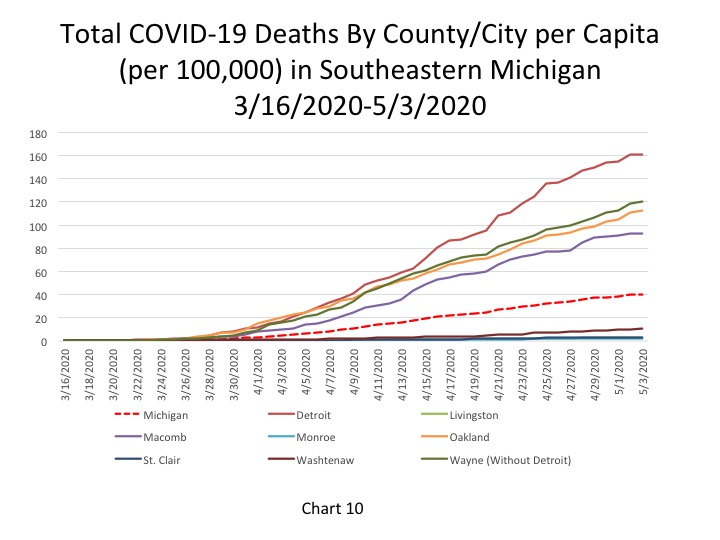
The case fatality rate in Detroit remained above 11 percent (11.6%) on May 3 while Macomb County’s dipped just below (10.9%). Washtenaw County has been experiencing a recent increase in its fatality rate. On May 3 Washtenaw County had a fatality rate of 6.4 percent. The reported fatality rate for the State on May 3 was 9.3 percent.
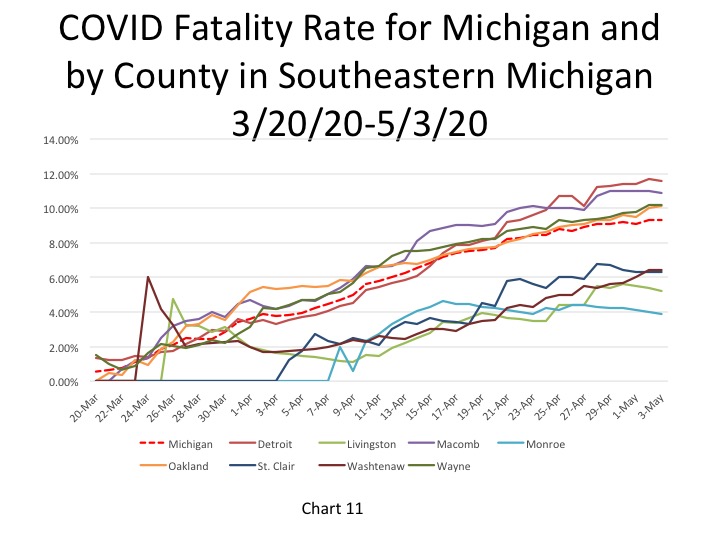
The number of new COVID deaths continues to decrease around the region. However, Detroit didn’t report any new deaths on Sunday, May 3, and this has not happened since the first reported COVID death. Despite this, the data does show the number of COVID deaths has been declining in Detroit, the region and the State.